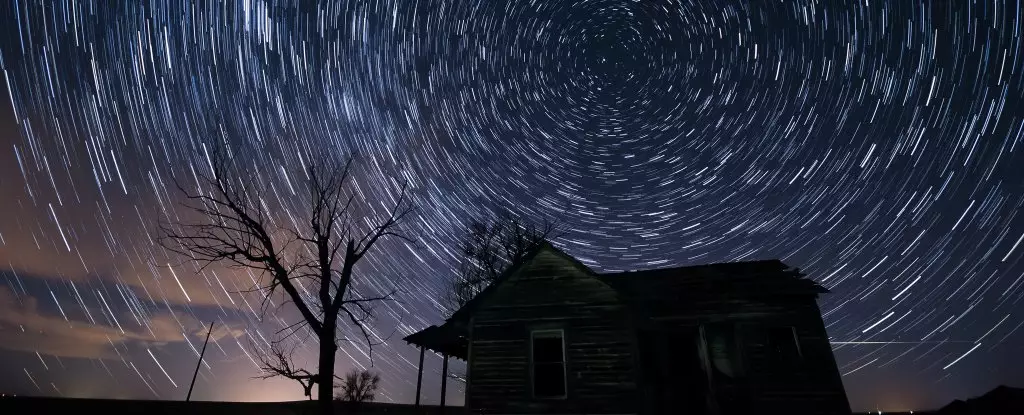With the dawn of a new year, the cosmos is set to offer skywatchers an array of captivating astronomical events. The first weekend of January in 2025 promises a spectacular lineup, featuring the Quadrantid meteor shower, a dazzling ‘SuperSun,’ and an enchanting lunar encounter with the planet Saturn. These events present a perfect opportunity for both amateur and seasoned astronomers to delve into the wonders of winter skywatching.
The Quadrantid Meteor Shower: A Brief but Brilliant Display
The Quadrantid meteor shower, peaking on January 4th, is known for its high Zenithal Hourly Rate (ZHR) which, this year, is anticipated to reach around 80 meteors per hour. Unlike other meteor showers that extend their activity over several days, the Quadrantids are notorious for their rapid and concentrated peak. This year, skywatchers can look forward to watching this event against a backdrop of a illuminating waxing crescent Moon, which is only about 27% illuminated. Unlike the typical moonlit interference that affects meteor visibility, this slender Moon is expected to create optimal viewing conditions for observers.
The peak of the shower will occur between 15:00 and 18:00 Universal Time (UT) on January 3rd, favoring observers in the northern Pacific region. However, North American and European stargazers shouldn’t be discouraged; the early morning hours of January 3rd and 4th will still provide good opportunities.
The name ‘Quadrantid’ harkens back to a now-obsolete constellation, Quadrans Muralis, which illustrates how historical perspectives shape our understanding of astronomy. As configuration and naming systems evolve, these remnants serve as reminders of the rich history embedded within astronomical events.
Perihelion: The Sun’s Spectacular Approach
A fascinating celestial coincidence occurs on January 4th as Earth reaches its perihelion, marking the closest point in its orbit around the Sun. At about 0.98333 AU from this fiery center, this event coincides with a typically chilly winter in the Northern Hemisphere, contrasting with the summer warmth experienced in the Southern Hemisphere. Engaging in observations during this period may seem counterintuitive; given the proximity to the Sun, it feels ironic that temperatures are generally at their lowest.
During perihelion, the Sun appears slightly larger in the sky, which adds to the intrigue of skywatching this time of year. The discernible change in size between perihelion and aphelion is worth noting, offering a unique opportunity to reflect not just on our Solar System’s structure but on the deeper implications of Earth’s orbit through time, particularly the Milankovitch cycles, which influence climate change over millennia.
Adding to the allure of this weekend is the Moon’s occultation of Saturn, which will take place around 17:24 UT. As the 25% illuminated waxing crescent Moon passes in front of the ringed planet, the visual spectacle will be particularly favorable for observers in Europe under evening twilight conditions. The duration of this event, where Saturn will gradually disappear behind the Moon’s dark edge only to reemerge from the illuminated side, will last between 45 seconds and one minute—an unobstructed moment for viewers to relish.
This occasion marks the first of two lunar occultations of Saturn in 2025. Skywatchers have another chance to witness this extraordinary event on February 1st, making January 4th a special date for those eager to explore the wonders of their night sky.
For enthusiasts unable to pry themselves away from cloud cover or geographical challenges, astronomer Gianluca Masi offers a digital lifeline. Hosting three virtual sessions during this weekend, he will cover the Quadrantid meteor shower, the lunar occultation of Saturn, and even the Moon’s close approach to Venus. These events, blending technological innovation with traditional skywatching, ensure that no one misses out on the action—even when faced with less-than-ideal conditions.
Meanwhile, a planetary parade is set to unveil before our eyes, with the Moon sliding by Saturn and Venus at dusk. Jupiter and Mars will soon follow suit, making January an enthralling month for all who gaze upward.
As we embrace the chill of winter nights, the celestial calendar provides ample opportunities for awe and discovery. The beginning of 2025 invites skywatchers to step outside, prepare with the right gear, and embark on a journey filled with cosmic wonders. Whether weather permitting or through a digital lens, the wonders of the universe await exploration.


Leave a Reply